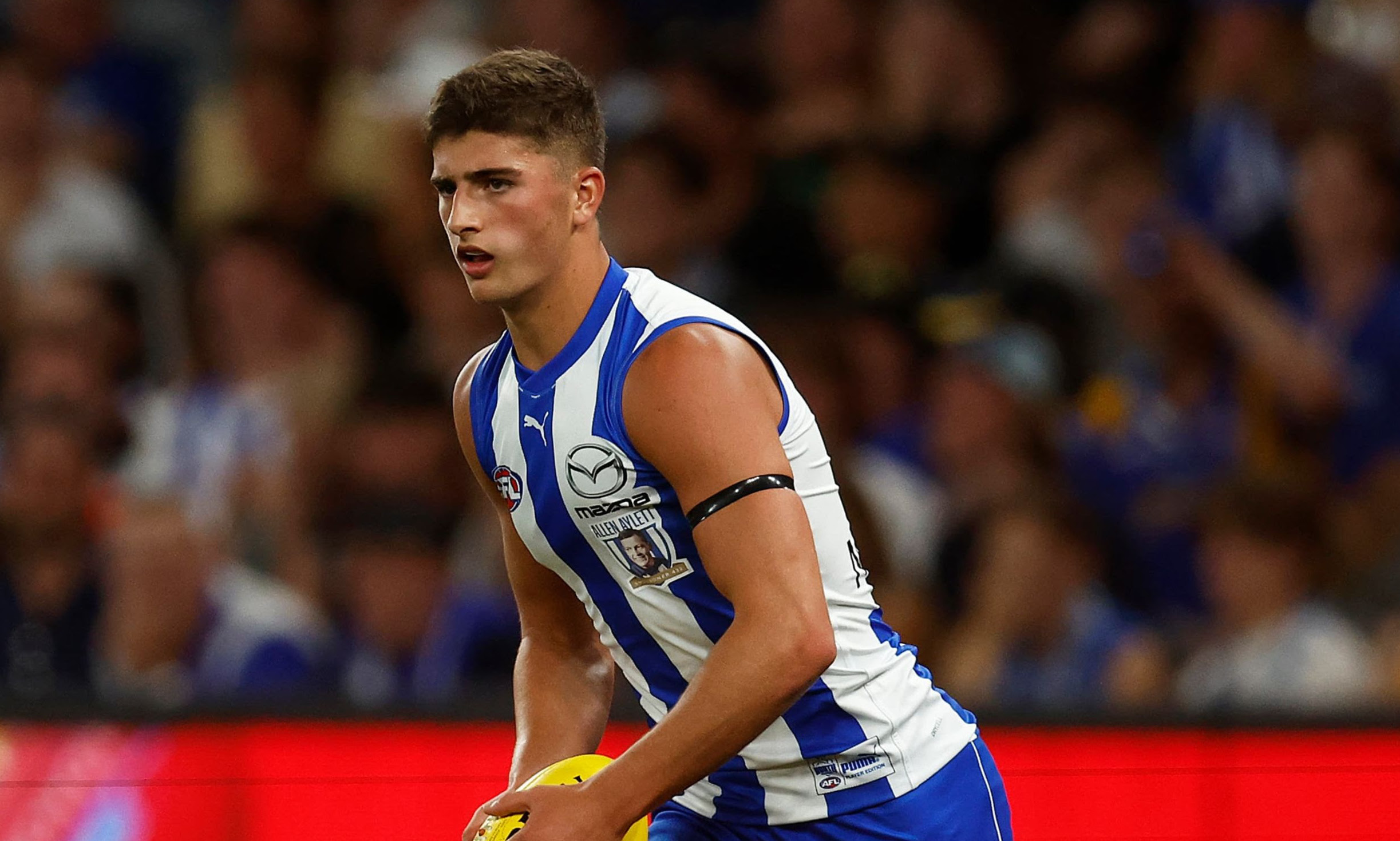
How Geelong and North Melbourne arrived at opposite ends of the AFL ladder in the space of a decade
When the 2015 AFL season came to an end, Geelong and North Melbourne were virtually neck and neck.
The Kangaroos ended the season having made their second consecutive preliminary final after another against-the-odds finals campaign under Brad Scott despite finishing the home and away season eighth.

Geelong missed the finals altogether for the first time since 2006 after winning just 11 games under Scott’s twin brother, Chris.
In the decade that followed the two teams’ fortunes could not be any different.
Geelong has since missed the finals on just one occasion, in 2023, a year after winning a premiership. The Cats have won a combined 117 home and away games along with nine finals wins, 124 if you include the seven wins they have already amassed so far this year.
In comparison, it has been a grim decade for the Kangaroos. Since 2015, the Kangaroos have won just 52 games and have not made the finals since 2016, when they were belted by Adelaide in an elimination final.
So why have the two teams had such contrasting fortunes in the last decade?
Attracting stars vs the inability to do so
There are so many aspects to team-building in the AFL, but your chances of a premiership begin and end with your best players and how many top-end stars you can have on your list at any one time.
It is no secret that Geelong’s immediate spike up the ladder in 2016 (from 10th to second in the home and away season) coincided with the arrival of current skipper Patrick Dangerfield.
Dangerfield, a Moggs Creek product who had played for the Geelong Falcons at the Under 18 level, had long been linked with a move to the Cats after starting his career with Adelaide.
By the time Dangerfield decided to exercise his rights as a restricted free agent to join Geelong at the end of 2015, he’d already racked up three All-Australian jackets, and two top-five finishes in the Brownlow Medal. 
Geelong, knowing it would have to make room to acquire Dangerfield, slowly began picking off parts of the core that won premierships in 2007, 2009 and 2011 in the years preceding his arrival.
Between the end of 2012 and 2015, Geelong oversaw the exits of premiership stalwarts Matthew Scarlett, Joel Corey, Paul Chapman, James Kelly and Steve Johnson, with Dangerfield essentially acting as the bridge between two different premiership windows.
The addition of Dangerfield was virtually mirrored five years later, when the Cats were able to add star forward Jeremy Cameron, who was also a restricted free agent. The pair played a crucial role in Geelong’s run to the 2022 premiership.
Geelong’s reputation as one of the best-run sporting organisations in the country has allowed it to position itself favourably when it comes to attracting stars. Players regularly take discounts to be a part of the Cats machine, knowing buy-in could result in team success, as it has for Dangerfield and Cameron. While other clubs will break the bank in order to try and lure stars, Geelong doesn’t overpay.
Leave a Reply